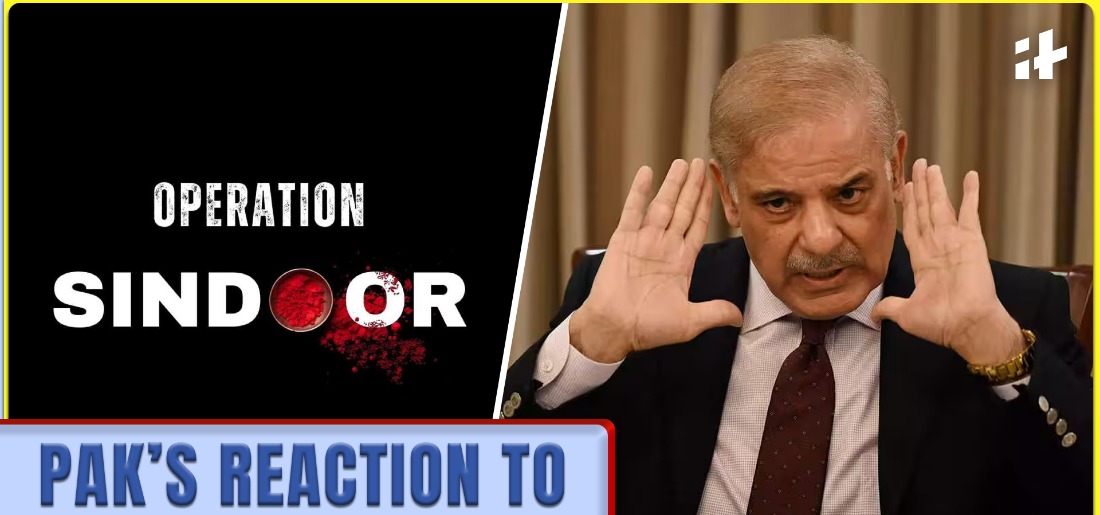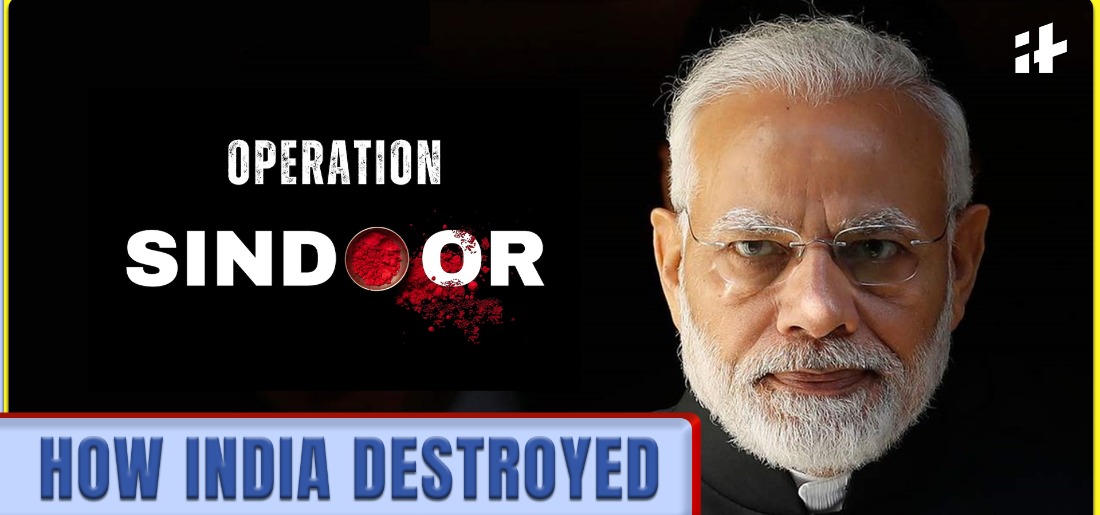 News | ??0Updated 2 hours ago ? General
News | ??0Updated 2 hours ago ? GeneralPM Modi sends strong message, Pakistan sends drones | India-Pakistan conflict
Following PM Modi¡¯s address post-Operation Sindoor, Pakistan reportedly launched another drone attack targeting J&K¡¯s Samba and Punjab¡¯s Jalandhar. Indian air defence responded swiftly, and precautionary blackouts were enforced, including at the Vaishno Devi shrine. Flights to several cities were cancelled. Meanwhile, US President Trump¡¯s claim of brokering peace through trade threats was denied by Indian sources. Modi confirmed Pakistan had requested a ceasefire after India¡¯s strong retaliation. India has also proposed retaliatory tariffs on US goods amid ongoing tensions.
Air Marshal AK Bharti serving as the Director General Air Operations (DGAO) at Air Headquarters provided key insights into the successful airstrikes conducted on multiple high-value targets. These airstrikes were meticulously planned and executed with precision to neutralize critical enemy infrastructure and ensure national security. Key locations targeted in the operations included terrorist training camps, weapon storage depots, and logistical hubs that were essential for enemy operations. The strikes were designed not only to disrupt enemy operations but also to send a strong message about the nation's military capability and strategic readiness. With months of preparation, real-time intelligence, and advanced technology, the airstrikes were executed to minimize collateral damage while maximizing their impact. These operations are part of a broader ongoing strategy aimed at weakening enemy forces and securing national borders.
India has exposed Pakistan¡¯s open support for terrorists with shocking evidence ¡ª a funeral where Pakistani soldiers honored militants killed in Indian airstrikes. Indian Ambassador to the UK, Vikram Doraiswami, presented an image showing Hafiz Abdul Rauf, brother of Jaish-e-Mohammed¡¯s founder, leading prayers for slain terrorists. With coffins draped in Pakistan¡¯s national flag, India questions Islamabad¡¯s claims of civilian casualties. Indian Foreign Secretary Vikram Misri further challenges Pakistan¡¯s narrative, highlighting contradictions in its stance. As tensions rise along the Line of Control, India¡¯s decisive action against terror networks sparks global debate.
India¡¯s air defence systems have once again proven their strength, successfully neutralizing Pakistan¡¯s airstrike attempt on May 8-9, 2025. As drones, missiles, and loitering munitions targeted key cities and military bases, India¡¯s Counter-UAS grid, S-400 Sudarshan, Prithvi Air Defence, Akash, SPYDER, QRSAM, and Barak 8 swiftly intercepted every threat, ensuring zero casualties. From high-altitude missile interception to rapid-response drone neutralization, India¡¯s multi-layered defence network dominates aerial warfare.
India¡¯s S-400 Sudarshan Air Defence System has proven its dominance by intercepting and neutralising Pakistan¡¯s aerial assault on May 8-9, 2025. As Pakistan launched drones, missiles, and aircraft targeting key Indian cities like Jammu, Amritsar, and Jaisalmer, the S-400 swiftly eliminated every incoming threat, ensuring total airspace protection. With a 400 km detection range, multi-layered defence capabilities, and advanced phased array radars, left Pakistan¡¯s offensive strategy in ruins. As tensions escalate, the S-400 Sudarshan remains India¡¯s ultimate defence powerhouse, ensuring air superiority and operational dominance.
The Indian Premier League (IPL) 2025 has been suspended for one week, following rising military tensions between India and Pakistan. The decision comes just a day after the Punjab Kings vs Delhi Capitals match was abandoned midway in Dharamsala, as air raid alerts sounded across Jammu and Pathankot.
On May 7, 2025, India launched Operation Sindoor, executing a series of high-precision strikes that destroyed nine terrorist bases in Pakistan and Pakistan-occupied Kashmir (PoK), killing over 70 terrorists. Key targets included Jaish-e-Mohammed (JeM) headquarters in Bahawalpur and Lashkar-e-Taiba (LeT) bases in Muridke, delivering a major blow to terror infrastructure. Defence experts like Capt. (Retd) Anil Gaur and Shiwalee Deshpande praised the operation's strategic execution, aided by NTRO intelligence and surface-to-surface missiles. Prominent leaders across party lines, including Home Minister Amit Shah, hailed the Indian Armed Forces for the successful mission. Watch full coverage, expert analysis, and political reactions on Operation Sindoor ¡ª India¡¯s bold response to terror.
India's Operation Sindoor, launched on May 7, targeted nine terror infrastructure sites in Pakistan and PoK in response to the April 22 Pahalgam attack. Pakistan condemned the move as an "act of war". Using SCALP missiles, HAMMER bombs, and kamikaze drones, the precision strikes avoided Pakistani military facilities. Heavy shelling followed along the LoC. Global powers, including the US, UN, and China, urged restraint as tensions between the nuclear-armed neighbors escalated
On May 7, 2025, India launched Operation Sindoor in response to the Pahalgam terror attacks. Taking center stage in the aftermath were two exceptional women officers ¡ª Colonel Sofia Qureshi and Wing Commander Vyomika Singh ¡ª who led the official media briefing. Their presence not only symbolized India¡¯s strong stance against terrorism but also paid tribute to the widows of fallen soldiers. Col. Qureshi, a trailblazer from the Indian Army¡¯s Corps of Signals, made history by becoming the first woman to command an Indian contingent in a multinational military exercise. Wg. Cdr. Singh, a decorated IAF helicopter pilot, has logged over 2,500 flying hours and participated in daring rescue operations and mountaineering expeditions.
In a bold and strategic move, the Indian Armed Forces have launched Operation Sindoor, striking 9 terrorist hideouts in Pakistan and PoK. This action comes in response to the Pahalgam terror attack, where 26 innocent lives were lost. Indian missiles have hit terror hubs in Kotli, Bahawalpur, Muzaffarabad, and Muridke, dismantling infrastructure used to target India. Pakistan has responded with heavy artillery fire at the LoC in Poonch-Rajauri, Mendhar, and Bhimber Gali, violating the Ceasefire Agreement. The Indian Army is retaliating with precision firepower, ensuring that Pakistan¡¯s provocations do not go unanswered. India has also imposed a complete trade ban, suspended the Indus Waters Treaty, and blocked Pakistani aircraft from its airspace, economically isolating Pakistan like never before! As the situation escalates, world leaders, including Donald Trump, express hope that tensions will settle down quickly.
Operation Sindoor, launched by the Indian Armed Forces, targeted and destroyed nine major Pakistan-based terror camps, including those linked to the 2008 Mumbai attacks and recent attacks in Poonch and Jammu. Camps of Lashkar-e-Taiba, Jaish-e-Mohammed, and Hizbul Mujahideen were hit, including the infamous Markaz Taiba and Syedna Bilal. The operation was in retaliation for the Pahalgam terror attack, ensuring zero civilian casualties. Colonel Sofiya Qureshi and Wing Commander Vyomika Singh led the media briefing.










